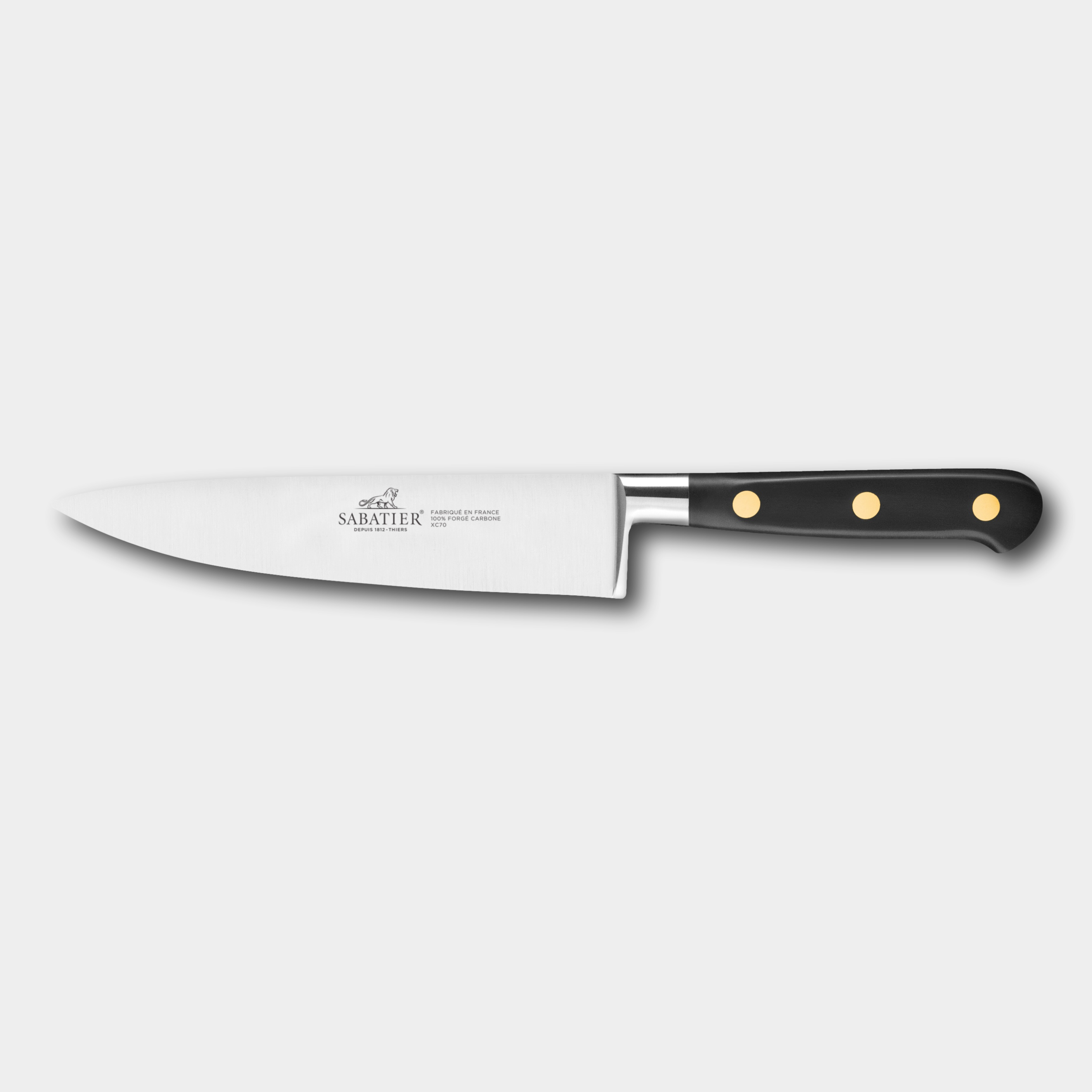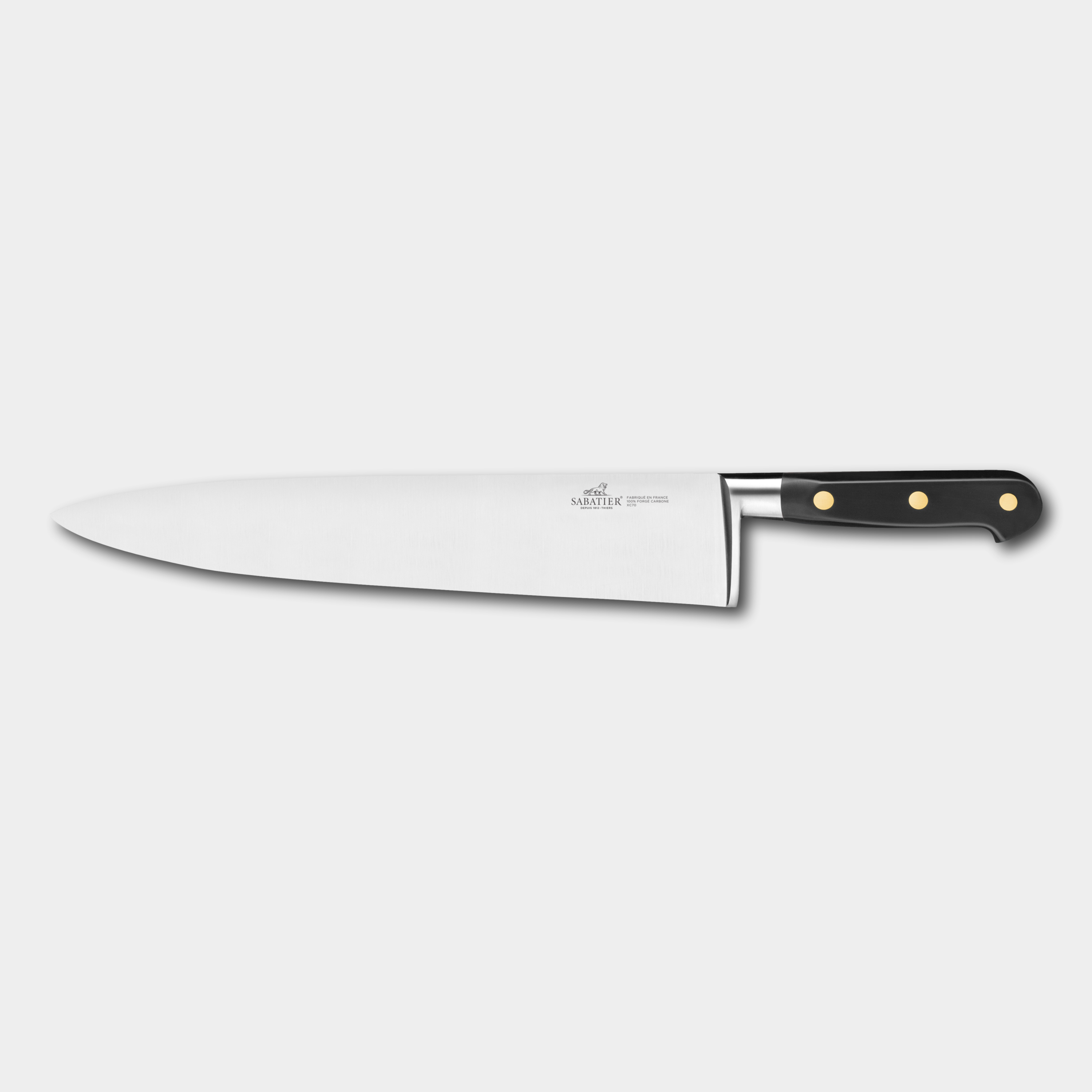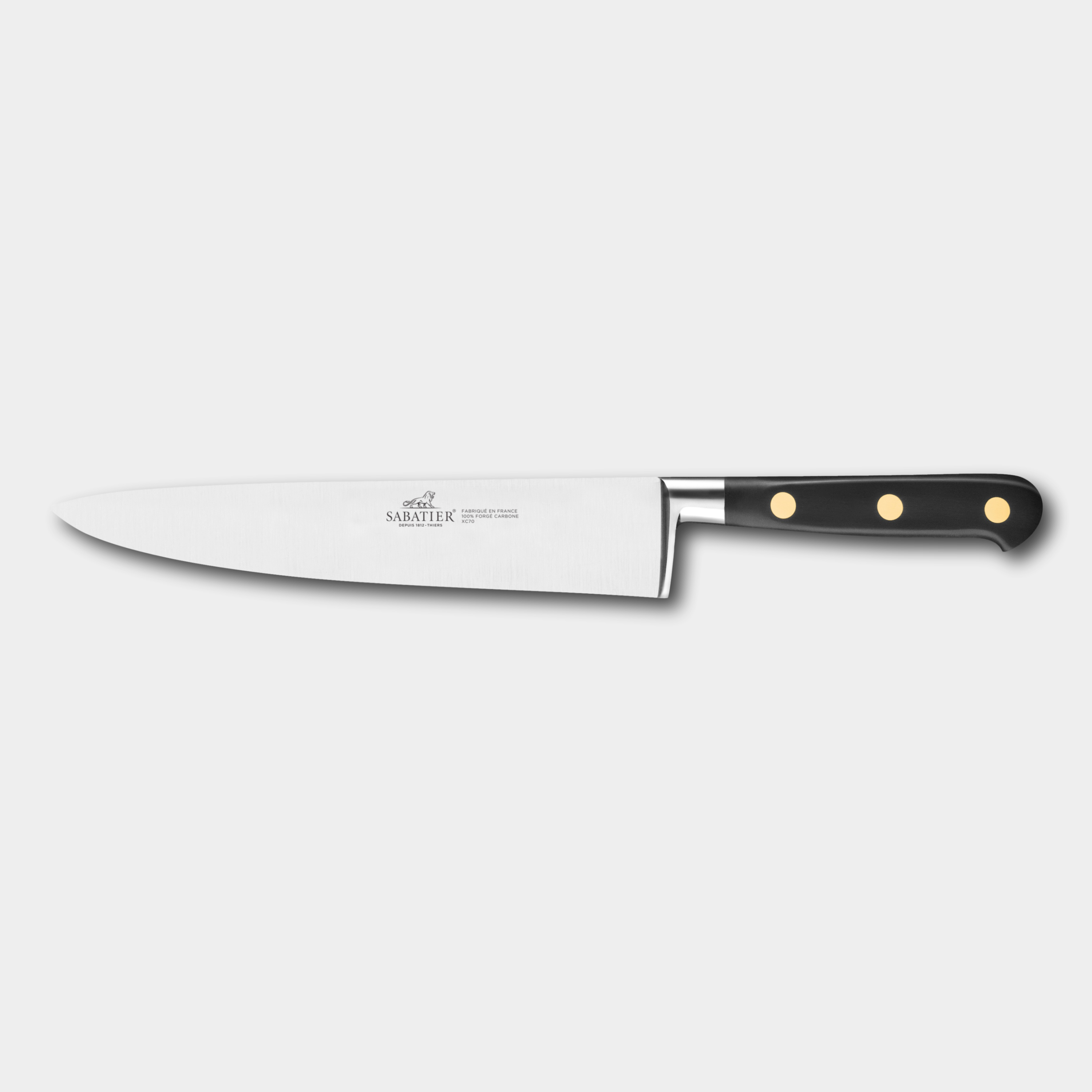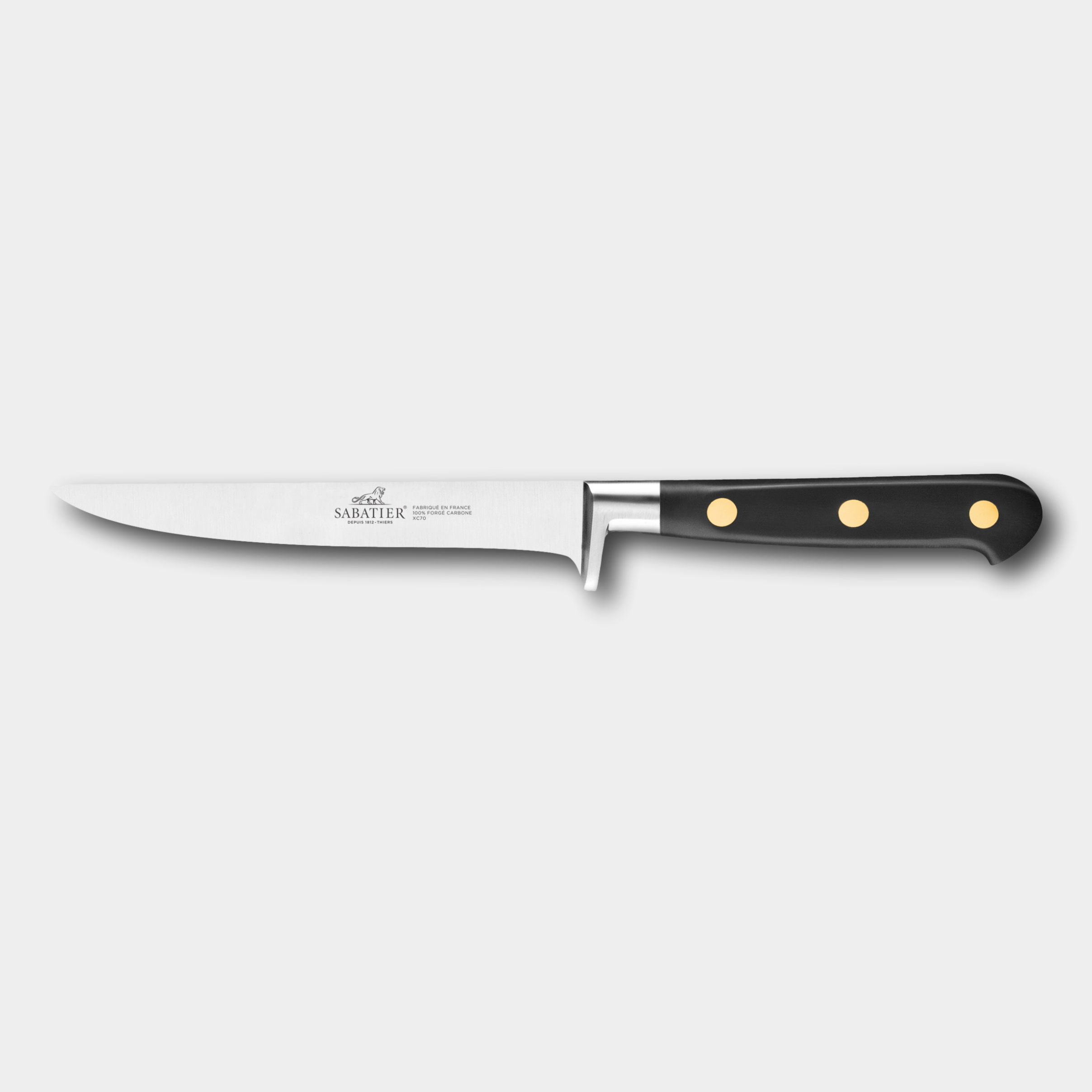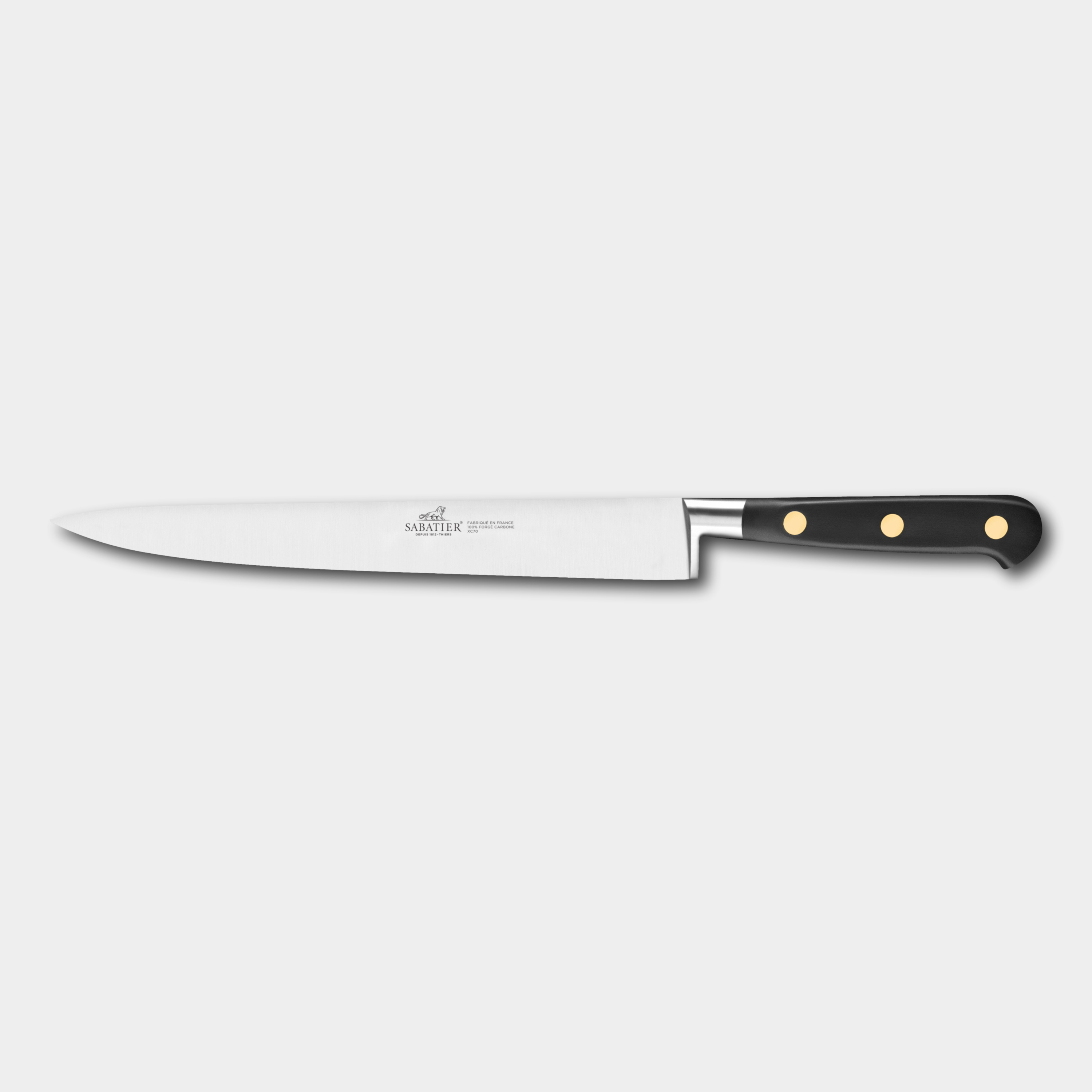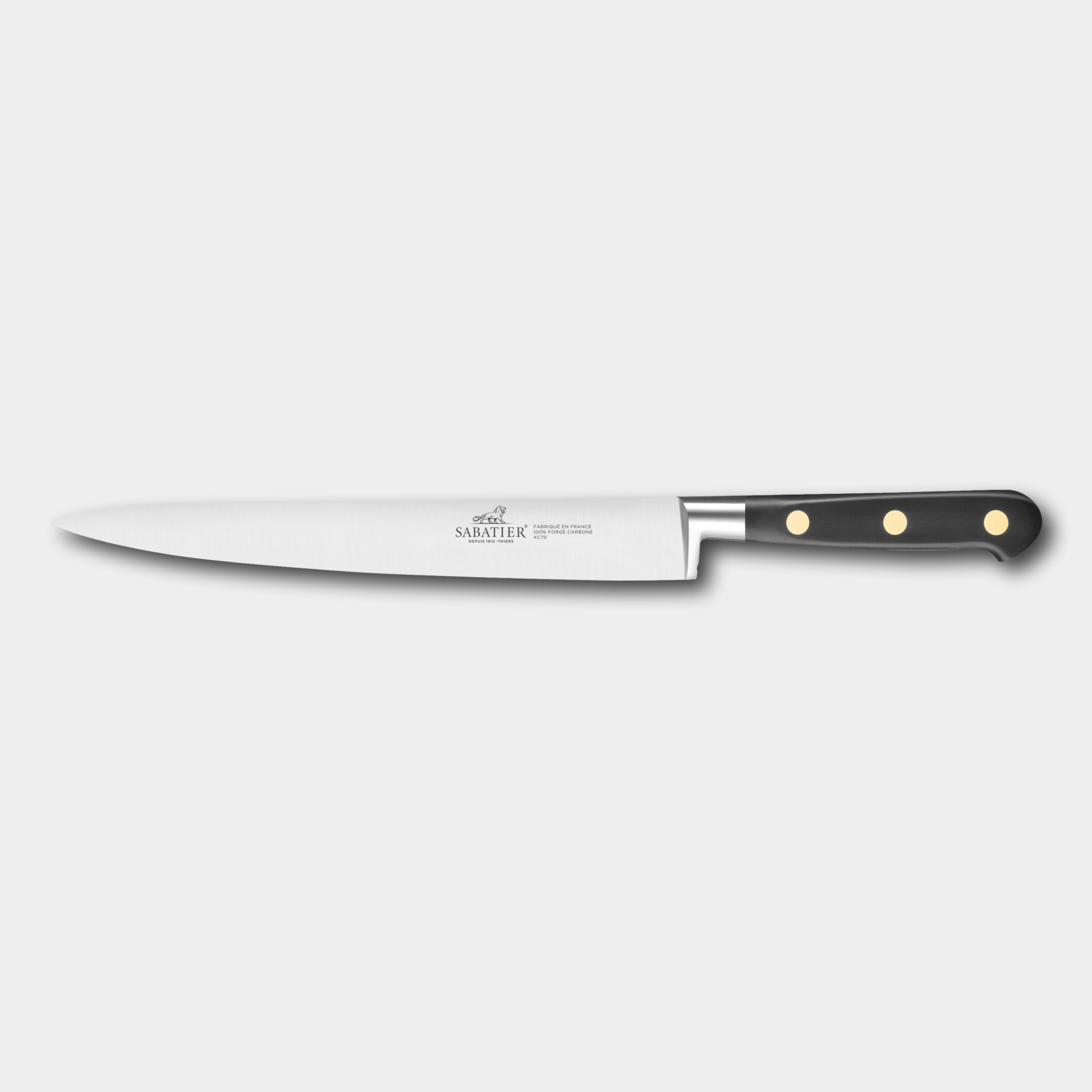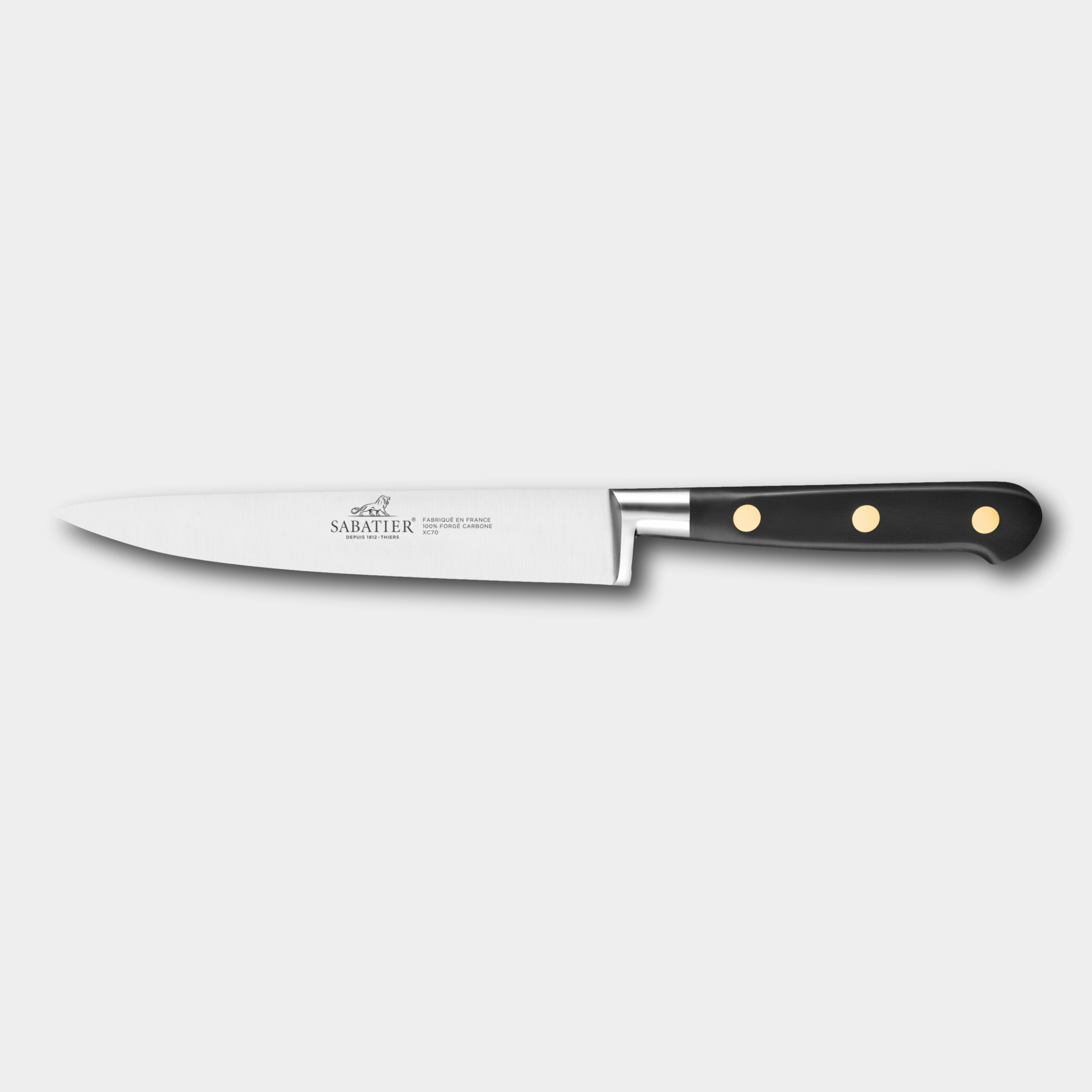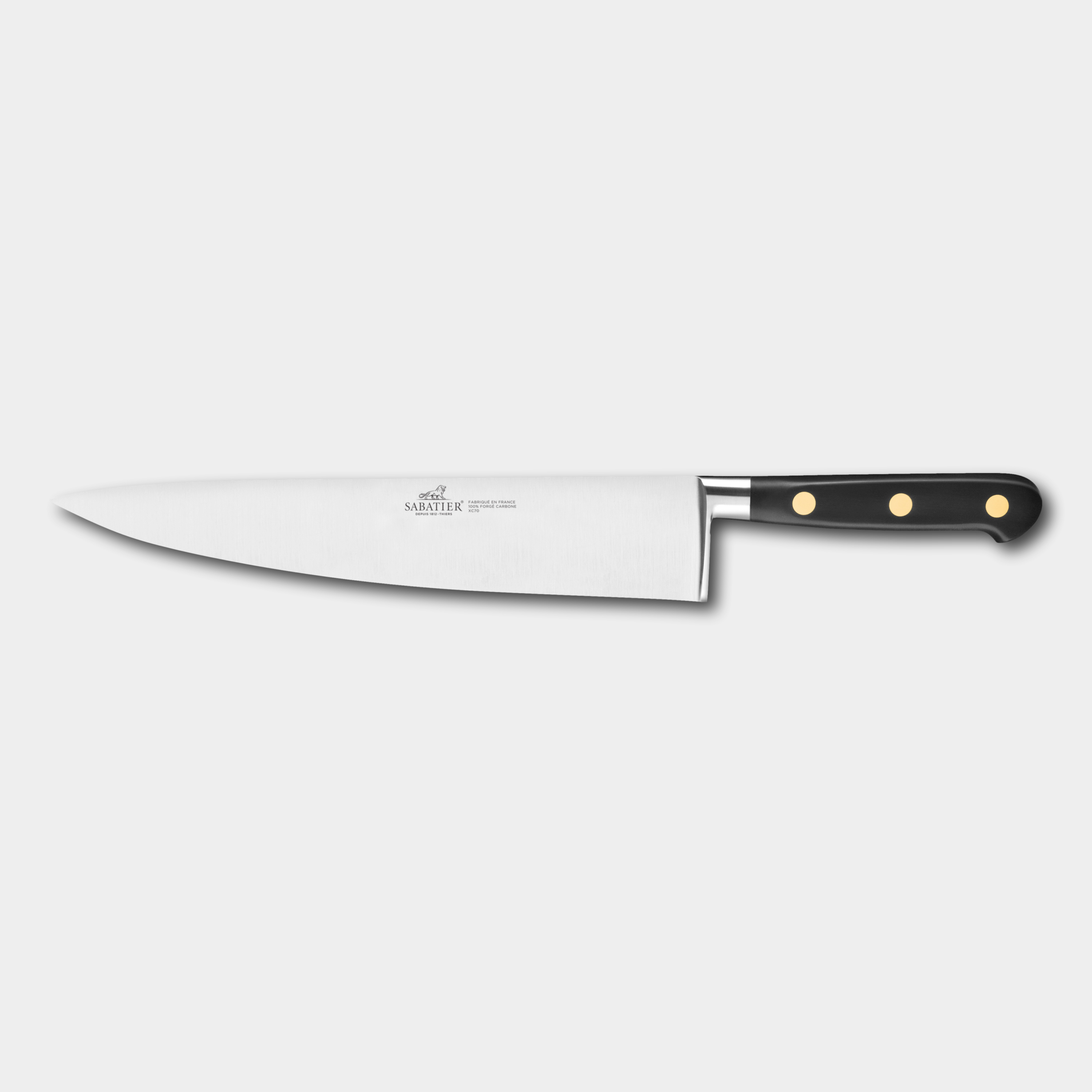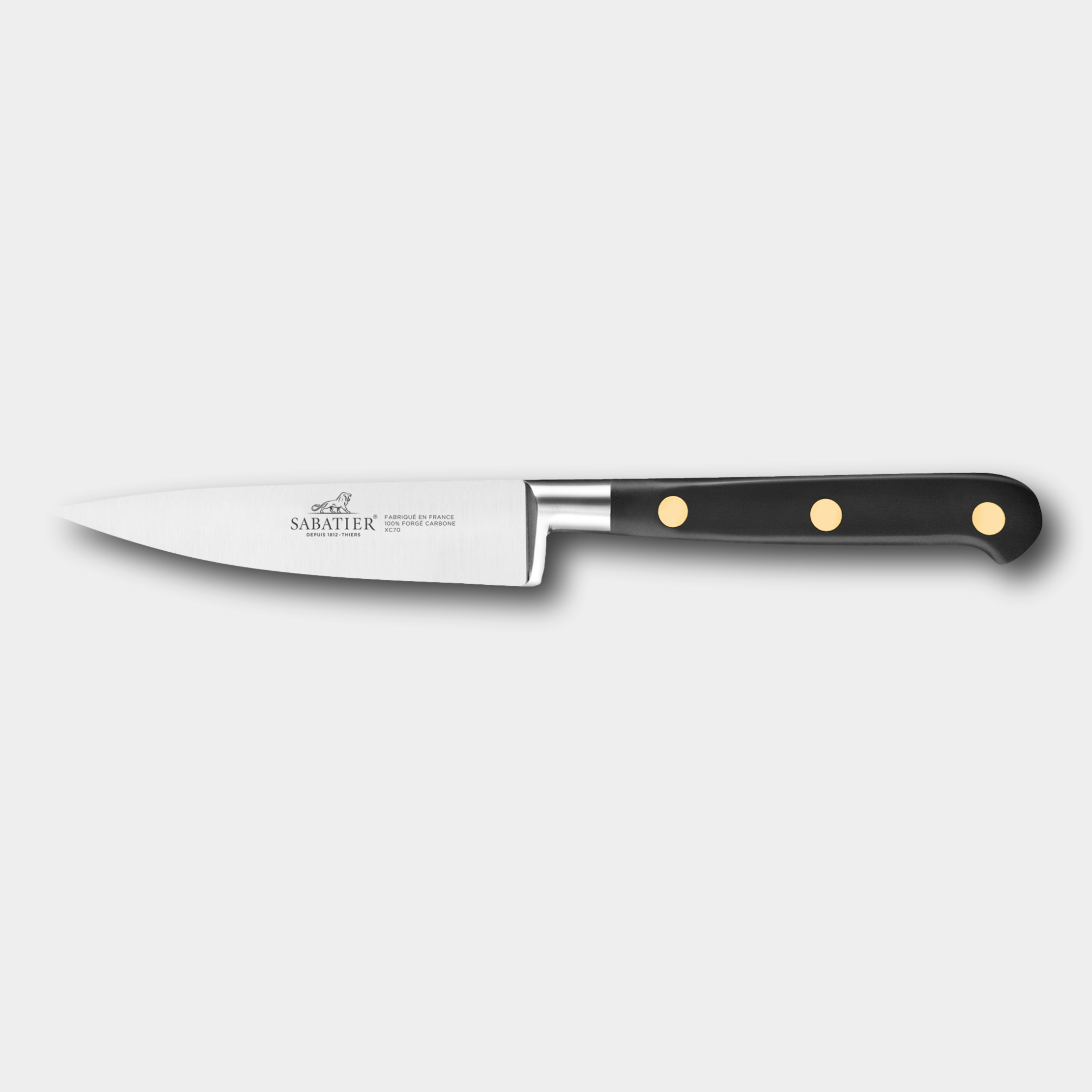
Lion Sabatier Ideal Carbon Knives
High Carbon Knives - Superior Sharpness
The Lion Sabatier Ideal Carbon is a very special knife collection due to the use of high carbon steel. These knives are a testament to traditional French knife-making excellence. Handcrafted in Thiers, France, each knife embodies the rich heritage and meticulous craftsmanship associated with the Sabatier name. The Ideal Carbon series is renowned for its exceptional sharpness and edge retention, making it a valuable addition to any kitchen.
The elevated carbon content allows the blades to achieve a finer grain structure, which in turn makes it easier for the blade to be honed to a sharper edge than blades that use steel lower in carbon content. Additionally, high-carbon steel tends to keep its edge and is generally easier to sharpen compared to other steels, allowing for straightforward maintenance to retain optimal performance. However, it's important to note that high-carbon steel is more susceptible to corrosion and staining; therefore, proper care is essential. After each use, knives should be hand-washed, thoroughly dried, stored correctly, and occasionally oiled to prevent rust and maintain their exceptional qualities. One of the things we love about this range is that overtime the blades are likely to develop a natural patina due to oxidisation. The natural patina leads to a change of blade colour that is unique to each knife which ranges from greys, blues, purples and golds. This really adds some character to your kitchen.
Our Complete Guide on High Carbon KnivesKey Features
- Superior SharpnessXC70 High Carbon Steel allowing for a razor-sharp edge
- Expert CraftsmanshipExpertly crafted in Thiers, France
- Handles: Ergonomic handles with a full tang construction designed for superior balance and comfort
- Natural PatinaMaking every knife unique
FAQs
"Sabatier" is a name that resonates with a rich tradition of exceptional quality in the world of kitchen knives, hailing from the renowned Thiers region of France, known as the cutlery capital! The name itself doesn't directly translate from French but it is a hallmark of craftsmanship and excellence, embedded in centuries of knife-making artistry. It's fascinating to note that "Sabatier" isn't just any word; it represents a legacy. Several brands, including the prestigious "Lion Sabatier," proudly carry this name, each contributing to the enduring legacy of unmatched quality and performance in kitchens around the globe. Now, that's something to get excited about!
Ah, the question of which is the "real" Sabatier is one that sparks much interest and conversation among culinary enthusiasts! The truth is, there isn't just one "real" Sabatier due to the way the name has been used over time. In the past, the Sabatier name was not trademarked, which led to various manufacturers in the Thiers region of France adopting it for their high-quality kitchen knives.
Each Sabatier brand, such as Lion Sabatier, brings its own flair and dedication to craftsmanship to the table, contributing to the rich tapestry of quality and excellence associated with the name. These brands each uphold the rigorous standards of traditional French knife-making, ensuring that whether you're a professional chef or a home cooking enthusiast, you're getting a piece of culinary history designed to elevate your cooking experience. So, while the search for the "real" Sabatier might lead you down a path of multiple brands, it's the shared commitment to quality and heritage that truly defines the essence of Sabatier. We chose to stock Lion Sabatier due to the exceptional quality of the range
Sabatier knives carry with them not just the artistry and craftsmanship of Thiers, France, but also a storied legacy that dates back to the early 19th century. The Sabatier name began to forge its reputation in the 1800s, with several families in Thiers adopting the name for their high-quality kitchen knives, making it a symbol of excellence in the culinary world.
We aren't a fan of questions like these as both types of steels have their pros and cons and we love them both.
However, we will cover how each knife excels and why one might be more suited to your kitchen.
Carbon Steel Knives:
Sharpness and Edge Retention: The fine grain structure of carbon steel allows these knives to be honed to a razor-sharp edge that is sharper than other steel types.
Ease of Sharpening: The composition of carbon steel allows for easier sharpening, enabling users to maintain optimal performance with less effort.
Maintenance Requirements: Carbon steel knives do require more maintenance due to their susceptibility to rust and staining due to its lack of chromium content. This maintenance is very easy but needs to be adhered to in order to ensure your blade doesn't rust. This includes immediate thorough drying after washing and the occasional oiling, to prevent corrosion.
Natural Patina: Overtime the blades are likely to develop a natural patina due to oxidisation. The natural patina leads to a change of blade colour that is unique to each knife which ranges from greys, blues, purples and golds. This really adds some character to your kitchen.
Stainless Steel Knives:
Corrosion Resistance: Stainless steel knives contain chromium, which enhances their resistance to rust and staining, making them more forgiving and require less of a maintenance routine.
Sharpness: Even though stainless steel knives can be very sharp carbon steel blades can achieve a sharper edge (this is subject to the person sharpening as well as the manufacturer of the knife).
Durability: Stainless steel knives are generally more durable and less prone to chipping in comparison to high carbon blades making them a better choice for those that think they need a blade that is more forgiving to wear and tear.
Maintenance: These knives require less meticulous care compared to carbon steel, as they are less likely to rust or stain making them a good choice to those who think they might struggle sticking to the maintenance routine of high carbon blades.
Yes, high-carbon steel is susceptible to rust. Unlike stainless steel, which contains chromium to enhance corrosion resistance, high-carbon steel lacks sufficient chromium content, making it more prone to oxidation when exposed to moisture and air.
Yes, it's advisable to oil carbon steel knives to prevent rust and maintain their performance. Applying a thin layer of oil creates a protective barrier against moisture and contaminants that can cause corrosion.
A couple of oils we recommend:
Food-Grade Mineral Oil: A popular choice for kitchen knives, mineral oil is odourless, tasteless, and won't go rancid over time. It's effective in preventing rust and is safe for contact with food.
Application Tips:
- Clean and Dry: Wash the knife with warm, soapy water and dry it thoroughly to remove any moisture.
- Apply Oil: Using a soft cloth or soft paper towel, apply a thin, even layer of your chosen oil to the blade's surface.
- Storage: Store the knife in a dry place to minimise exposure to humidity.
Regular oiling, especially in humid environments or if the knife isn't used frequently, will help preserve the blade's integrity and extend its lifespan.
High-carbon steel blades are known for their exceptional hardness and ability to maintain a sharp edge. However, this increased hardness can make them more brittle compared to other steels, potentially leading to chipping or breaking under certain conditions. Factors such as blade geometry, heat treatment, and intended use play significant roles in a blade's durability. When a high carbon blade is used for the task that it was designed for and is stored correctly you have nothing to worry about.
Shop at Cotswold Knife Company with confidence, knowing we are a verified stockist of Lion Sabatier knives.

